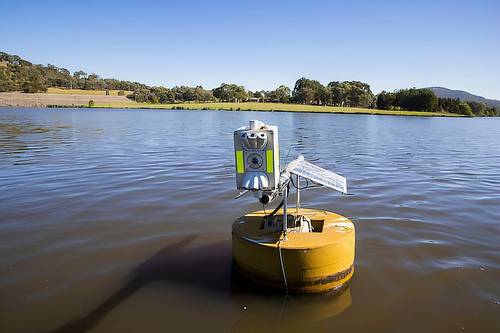CSIRO Aims to Create a 'Weather Service' for Water Quality
CSIRO, Australia’s national science agency, has launched AquaWatch Australia, a mission to deliver a world first ground-to-space water quality monitoring system for Australia and the globe.
AquaWatch will provide near real-time updates and predictive forecasting – a weather service for water quality – once fully operational.
Using an extensive network of Earth observation satellites and ground-based water sensors, it will support better water quality management, with early warning of harmful events such as toxic algal blooms, blackwater and runoff contamination.
The system will also increase the resilience of Australian communities who depend on water, as well as improved outcomes for our natural environment after events like bushfires and floods.
CSIRO, with foundation partner SmartSat CRC, is bringing together research, government, and industry with an initial co-investment of $83 million to design and develop AquaWatch.
CSIRO Chief Executive, Larry Marshall, said water is one of the most important and vital resources in Australia and across the globe.
“Imagine taking your family to the local swimming spot and being able to open your phone and check the water quality before they dive in. Or better yet, getting a forecast for the water quality days before you planned your family day out,” Dr Marshall said.
“Now imagine the impact of this if you were an environment manager, able to receive advance warning of the oxygen-depleted blackwater events often responsible for mass fish kills. Or an aquaculture farmer able to plan ahead for an impending algal bloom.
“Overseas, in places where people still face the risk of unsafe water for basic needs like drinking and sanitation, such a service could be a game-changer.
“The ingenuity behind AquaWatch is it integrates Earth observation with other science capabilities like in-situ sensing, ecosystem modelling, engineering, data science and artificial intelligence.
"It is the latest example of CSIRO’s Missions Program which are large-scale scientific and collaborative research initiatives aimed at accelerating the pace and scale at which we can solve some of the nation’s greatest challenges," he said.
Working with a range of implementation partners, AquaWatch will extend from rivers to coasts, with the ability to monitor bays, coastal wetlands, aquaculture farming, mangrove forests and coral reefs, including the Great Barrier Reef.
SmartSat CRC Chief Executive Officer, Andy Koronios, said that space technology will be a key aspect of AquaWatch and essential to developing an accurate understanding of Australia’s water systems.
"As the AquaWatch foundational partner, SmartSat’s collaboration with CSIRO has established a number of key pilot projects aimed at developing technologies to effectively monitor and manage this essential resource,” Professor Koronios said.
“The initial suite of co-operative projects brings together research partners, government and industry and cover integrated ground-to-space water quality monitoring systems for inland, estuarine and near-coastal water bodies.
“The AquaWatch partnership is a prime example of the benefits of cross-agency collaboration and demonstrates how much we are able to achieve when we combine our efforts and know-how for the benefits of all Australians.
“This collaborative effort to harness the data gathered from satellites will play an essential role in safeguarding our future water supply and improving our natural environments,” he said.
Data from both the sensors in the water and on the satellites will then be integrated at a central data hub where CSIRO’s capability in data analysis and AI can provide forecasts a few days ahead.
AquaWatch already has six pilot sites set up around the country to test the system for several uses such as monitoring toxic blue-green algae blooms at Lake Tuggeranong in Canberra, a popular spot for recreation.
It is also being tested around our coasts, with another pilot focused on how sediment flow from the Fitzroy River out to the Great Barrier Reef affects water quality.
Additional pilots established overseas will demonstrate how AquaWatch can be used to monitor water quality for drinking, sanitation, species conservation, hydroelectricity and carbon sequestration in mangrove forests.
The AquaWatch Mission brings together CSIRO with SmartSat CRC and a network of collaborators to develop and implement the system including government, the ACT Government’s Environment, Planning and Sustainable Development Directorate; NSW Department of Planning and Environment; Queensland Department of Environment and Science; South Australian Research and Development Institute (SARDI); Western Australia’s Department of Water and Environmental Regulation; along with industry BiOceanOr; Hunter Water; universities and research organizations including ANU Institute for Water Futures; ANU Fenner School of Environment and Society; Curtin University; La Trobe University (Cisco-LTU Centre for AI and Internet of Things); University of Queensland (Reef Catchments Science Partnership, Joint Remote Sensing Research Program and Remote Sensing Research Centre); and international collaborators including CSIRO Chile; Hanoi University of Mining and Geology; Swinburne University of Technology Sarawak Campus; University of California, Davis; University of California, Merced; Vietnam’s National Center for Water Resources and Investigation.














 December 2025
December 2025



